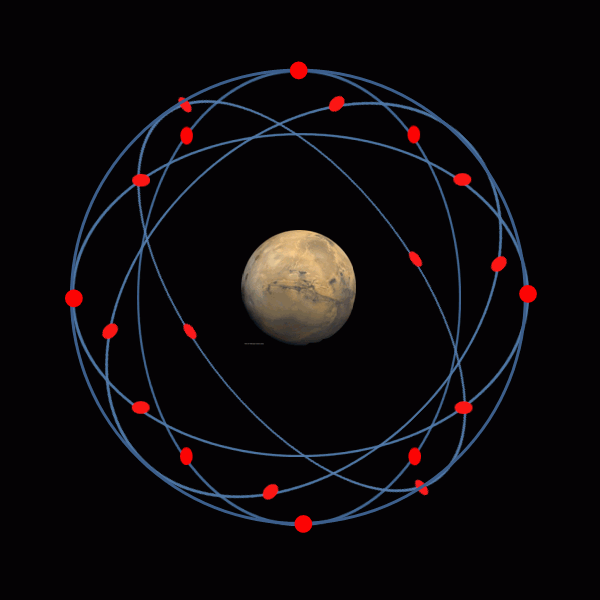Martian Positioning System (MPS)
Orbital Mechanics:
Launching our space vehicle, communications satellite and GPS Constellation satellites to Mars will need to be done in six different launches due to the weight of the equipment and current technology used to propel our equipment into space and towards Mars. Each launch, although out-sourced for equipment expertise and to meet timeline requirements, will occur from Cape Canaveral, Florida, so as to minimize inter-country constraints and international legal issues. Cape Canaveral also provides a near equatorial launch to provide a good initial velocity due to the earth's rotation helping to reduce fuel costs and minimize rocket weight. Should our alternate site in California be needed a decision will be made as the launch window gets closer and weather conditions can be accurately predicted.
For every launch to the planet Mars there is a launch window of a approximately three weeks every 26 months. The last launch window to Mars for the Phoenix Rover was from 3 - 24 August, 2007. Depending on the date of launch during that window of time, a Mars landing can have up to a 12 day difference. The Phoenix Rover touched down on Mars on May 26, 2008 approximately nine and a half months after leaving earth.
Our plan for launch of DD-1 through DD-6 is a 2 day increment between the dates of 8 and 18 October, 2009. We will also be paying close attention to the weather forecast in case our alternate launch site in California is needed due to the little room for error between launches. Our priority of launch is DD-1 carrying our expensive GPS satellites and long-haul communications to ensure seamless integration of our GPS constellation followed by the Martian Rover on DD-2. DD-3 through DD-6 will carry the remaining GPS satellite constellations. Should any part of the operation go wrong, we will have to wait 26 months to correct mistakes, so it is imperative that careful attention to details is made.
DD-1 will be carrying a GPS constellation of 4 satellites which will disperse from their final aero-synchronous orbit to their individual aero-synchronous orbits. DD-2 will be carrying our rover and GPS reciever antenna which is discussed in the location systems. The remaining DD-3 through DD-6 launches will carry 4 satellites a piece for a total of 20 satellites in our Martian Positioning System.
The entire trip will take approximately 10 months from start of the first launch to arrival of DD-6 on Mars. The method of transfer will be a Hohmann Transfer. Should any part of the opperation go wrong, or if bad weather persists, portions of the plan may be delayed until December of 2011, the next launch window. For further details about our plan, please see our Budget and Timeline.
This image shows our 20 Satellite GPS Constellation for Mars. Below that is a depiction of how the current GPS Constellation works for Earth. Our Constellation will provide at least 4 and at most 8 visible satellites at all times.

